Portulacaria fruticulosa
Portulacaria fruticulosa (H.Pearson & Stephens) Bruyns & Klak. (= Ceraria fruticulosa H.Pearson & Stephens)
Family: Didiereaceae
Common names: rose porkbush (Eng.), suikerkanna, roos-wolftoon (Afr.)
Introduction
Portulacaria fruticulosa is an ascending, much-branched shrub about 700 mm tall, with slender reddish-brown branches less than 1 mm in diameter at the ends, bearing numerous small, flat, fleshy leaves and small rose-pink flowers in short racemes in summer. This species grows widespread in the Lower Orange River Valley in the Bushmanland, Richtersveld and southern Namibian region. Best for desert gardens.
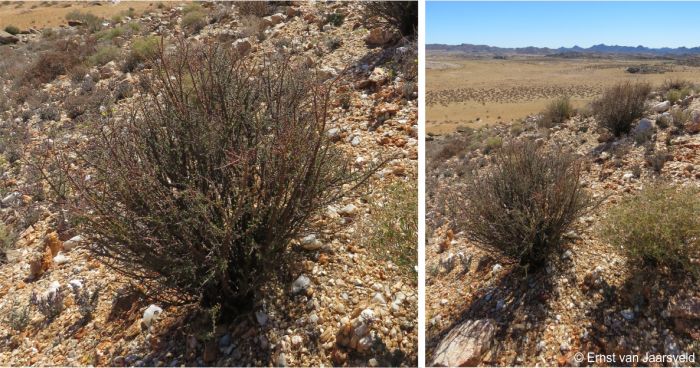
Fig. 1. A group of mature Portulacaria fruticulosa plants growing among quartz hills near Swartkoppies Mine, Bushmanland, Northern Cape, South Africa.
Description
Description
A multi-stemmed, virgate, slow-growing, succulent shrub up to 1.4 m high, from a tuberous rooted base. The branches slender, sometimes forked, the ultimate branches less than 1 mm in diameter, reddish-brown, often with a whitish bloom when young. Lower branches dark brown, peeling, younger branches greyish-brown, often with short spur-shoots at raised, cushion-like nodes about 4-18 mm apart and arranged in 4 ranks. The leaves sessile, ascending spreading, flattened, oblong-obovate to oblong, 4-6 mm long, green, the ends blunt (obtuse), with a minute point (apiculate). The flowers, 1-6, arising together on the nodes on short, 1-flowered pedicles 2-4 mm long, pinkish purple. Fruit fleshy, deep crimson, rounded, about 10 mm long and 6 mm in diameter, the older corolla persistent to the fruit base. Flowering time is in summer and autumn (December to May, southern Hemisphere).

Fig. 2. An illustration of Portulacaria fruticulosa by Marieta Visagie.
Conservation Status
Status
Plants are widespread and not threatened, consequently it was assessed as Least Concern (LC) by the Red List of South African Plants.
Distribution and habitat
Distribution description
Portulacaria fruticulosa is only known from the Lower Orange River Valley on both the South African and Namibian side. It occurs from the Richtersveld to the Bushmanland region and east of Augrabies (Gordonia) and north to Aus in Namibia. It grows on various geological formations such as shale, quartz, granite or mica schist. Plants grow in Desert, in both the Namib Desert Bioregion and well as the Gariep Desert Bioregion. They are usually confined to quartz and granite outcrops. It is not uncommon and often found in stands dominating the slopes sharing its habitat with other succulent plants.
Near Aggeneys, Bushmanland, plants were observed on quartz hills growing together with Portulacaria namaquensis. Other succulents observed sharing its habitat include: Crassula brevifolia, Commiphora gracilifrondosa, Kleinia longiflora, Aloidendron dichotomum, Aloe microstigma, Euphorbia gariepina, Cynanchum viminale, Euphorbia gummifera and Euphorbia dregeana. Other herbaceous perennials include Schwantesia ruedebuschii, Tylecodon paniculatus and T. rubrovenosus, Stapelia similis, Hoodia gordonii, Larryleachia perlata and Quaqua mammillaris and the occasional resin bush (Ozoroa concolor), lantern bush (Nymania capensis) and shepard tree (Boscia albitrunca).
Rainfall is sparse, between 50 and about 100 mm per annum, falling in spring and autumn, occasionally in winter. The summers are very hot, temperatures often reaching over 40 degrees centigrade. Winters are warm during the day and nights are cooler, rarely experiencing some light frost.
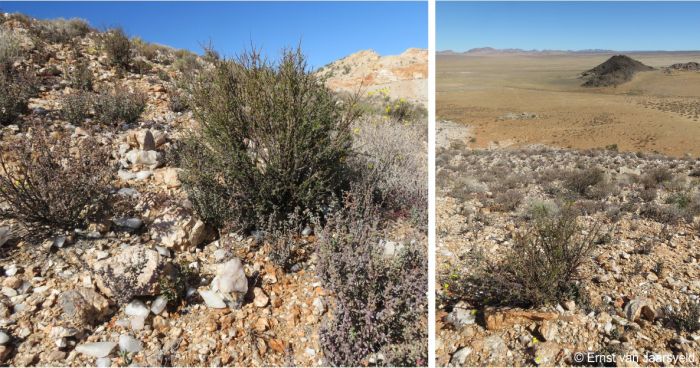
Fig. 3. Portulacaria fruticulosa growing among mesembs and other succulents on top of Witnekke, Bushmanland, Northern Cape, South Africa.
Derivation of name and historical aspects
History
Portulacaria fruticulosa was named by Harold Pearson and his assistant Edith Stephens from plants gathered on their Percy Sladen Memorial Expedition, in 1908-1911. Walter Percy Sladen (1849–1900) was a naturalist with a special interest in echinoderms and a fellow of the Linnean Society in London. After his death his wife helped with creating the Percy Sladen Memorial trust, which was administered by the Linnean Society. Pearson and Stephens named the plant Ceraria fruticulosa in the Annals of the South African Museum in 1912 from plants collected on this expedition. Bruyns and his co-authors selected the plant gathered by Pearson on one of the mountains they encountered on 2 July 1911 as their type specimen (Bruyns 214).
Pearson and Stephens created the genus Ceraria in the same publication in 1912, differing from Portulacaria, on grounds that Ceraria flowers are dioecious (sexes separate) and have a flattened ovary which becomes fleshy during its fruiting time. However a study by Bruyns and others, published in Taxon in 2014, showed that these are not sufficient grounds for keeping it separate and placed Ceraria in synonomy with Portulacaria. Engler and Schlechter named Ceraria schaeferi in 1915. However, it was found to be synonymous with C. fruticulosa. The genus Portulacaria was created by Jacquin in Collectanea (1: 160, t. 22.) in 1787 and is based on Portulacaria afra. The name Portulacaria pertains to its likeness to the genus Portulaca (family Portulacaceae). The species name fruticulosa pertains to its shrublike nature, fruticulose meaning ‘shrublike’.
Portulacaria belongs to the plant family Didieraceae which includes about 6 genera and 22 species, from dwarf drought-adapted woody plants to succulent shrubs to small trees. The Didiereaceae is confined to Africa and Madagascar. Previously Portulacaria was placed within the Portulacaceae family, to which is remains closely related. The Didiereaceae is characteristic for their markedly different long and short shoots, and small unisexual or bisexual flowers subtended by two bracts followed by their dry, indehiscent capsules, usually wind dispersed. The short shoots, often with spines are characteristic of the spiny forest in Madagascar (Christenhusz 2017). The family name Didiereaceae honours the French botanist Alfred Grandidier (1836-1921), who is known for his botanical exploration of eastern Africa and Madagascar.
The botanists, Applequist and Wallace, in a DNA study published in 2003, showed that Portulacaria, which was previously placed in the family Portulacaceae , clearly belongs to the Didiereaceae. This family has been divided into three subfamilies, with Portulacaria belonging to subfamily Portulacarioideae, which includes 9 species from semi-arid to arid parts in South Africa, Namibia and south-west Angola (Bruyns et al 2014). Of these 9 species, spekboom or porkbush (Portulacaria afra) is the most well-known, variable and widespread, and the only species which occurs in the southern and the eastern parts of South Africa, all the others are confined to the north-western parts of South Africa, Namibia and Angola.
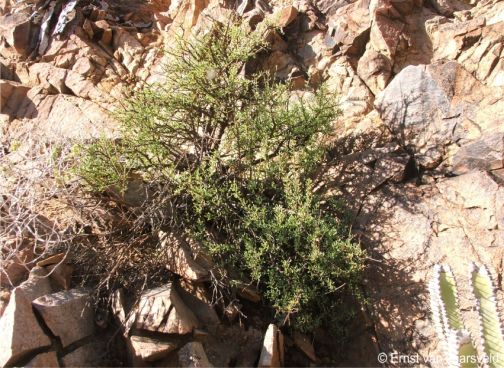
Fig. 4. Portulacaria fruticulosa growing at Akkedisbergpas in the Richtersveld National Park, Northern Cape, South Africa.
Ecology
Ecology
Portulacaria fruticulosa grows in very dry conditions and is an example of a shrub that is adapted to desert conditions with very sparse and unpredictable rainfall. Moisture is stored in its succulent leaves, roots, and the leathery bark, and its growth is slow and conservative. The light coloured bark reflects the sun, ensuring cooler stems. It can also become deciduous with dry conditions. The sexes are separate and pollinated by small insects. The winged seeds are dispersed by wind. According to R.A. Dyer (1984) the nodose scars or pulvinus-like nodes result in a scarred appearance. These scars represent highly reduced twigs.
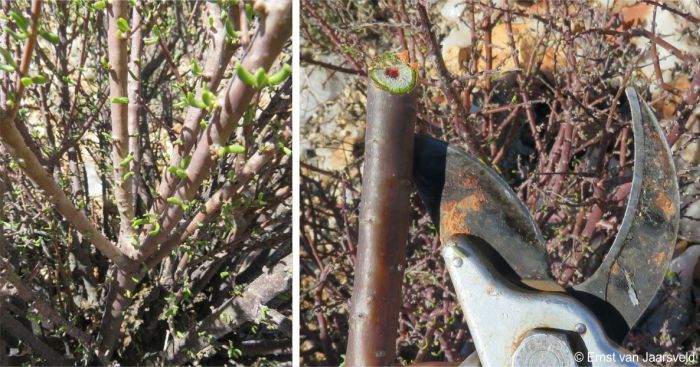
Fig. 5. The stems and leaves of Portulacaria fruticulosa showing the greyish brown bark and nodose scars, and a cut stem, showing the thick leathery bark.
Uses
Use
Portulacaria fruticulosa is grazed by local livestock and game.
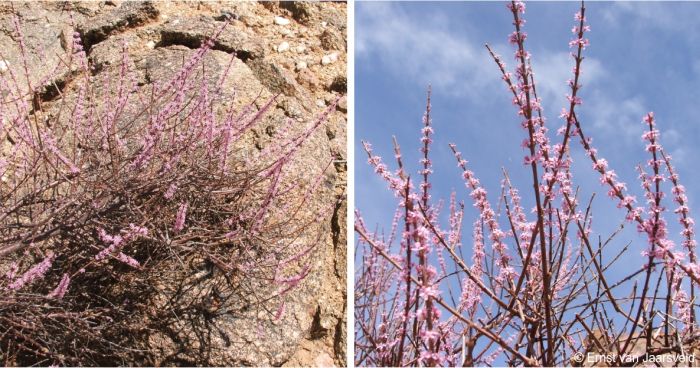
Fig. 6. Portulacaria fruticulosa in flower on a granite hill near Swarkoppies Mine, Bushmanland, Northern Cape.
Growing Portulacaria fruticulosa
Grow
Portulacaria fruticulosa is an attractive shrub when in flower. It is best grown in hot and exposed desert gardens. It also grows well in containers and outside of its desert and Succulent Karoo habitat it is best grown in containers in a greenhouse where its climate can be controlled. The soil should be a sandy gravel and well drained. Plants are slow growing. Because most species of Portulacaria other than P. afra are not very easy to grow, they can be grafted onto Portulacaria afra which is a vigorously growing species with a resilient rootstock. The best method to use is the v-shaped graft, tied with grafting tape.
Propagation is from both cuttings and seed. Sow seed in autumn in a sandy, well-drained soil. The suggested mixture consist of 2 parts sand or gravel, 1 part loam and 1 part compost. Cover the seed with a thin layer of sand (1-2 mm thickness). As a rule of thumb seed can be covered twice the diameter of the seed. First moisten the medium and once sown, the seed will stick to the substrate. Add the sand. Germination is within 3 weeks and once well rooted transfer to individual containers. These can be planted out as soon as they are big enough to handle. Cuttings can be made in autumn. Select young shoots of about 10 cm length, remove the lower leaves and plant in clean sand. Keep in a partially shady place. Rooting is within a month, when plants can be transferred to their individual containers.
References
- Applequist, W.L. & Wallace, R.S. 2003. Expanded circumscription of Didiereaceae and its division into three subfamilies. Adansonia sér. 3 25(1):13–16.
- Bruyns, P., Oliveira-Neto, M., Melo-de-Pinna, G & Klak, C. 2014. Phylogenetic relationships in the Didiereaceae with special reference to subfamily Portulacarioideae. Taxon 63(5):1053–1064.
- Christenhusz, M.J.M., Fay, M.F. & Chase, M.W. 2017. Plants of the World, an illustrated Encyclopedia of vascular plants. Kew Publishing, Royal Botanic Gardens, Kew.
- Dyer. R.A. 1984. Ceraria namaquensis. Flowering Plants of Africa. 45: t. 1892.
- Mucina, L. & Rutherford, M.C. (eds) 2006. The vegetation of South Africa, Lesotho and Swaziland. Strelitzia 19. South African National Biodiversity Institute, Pretoria.
- Pearson, H.H.W. & Stephens, E.L. 1912. List of the plants collected in the Percy Sladen Memorial Expeditions, 1908-9, 1910-11: Portulacaceae. Annals of the South African Museum 9:30-35.
- Raimondo, D., Von Staden, L., Foden, W., Victor, J.E., Helme, N.A., Turner, R.C., Kamundi, D.A. & Manyama, P.A. (eds) 2009. Red list of South African plants. Strelitzia 25. South African National Biodiversity Institute, Pretoria.
- Smith, C.A. 1966. Common names of South African plants. Memoirs of the Botanical Survey of South Africa No. 35. Government Printer, Pretoria.
- Snijman, D.A. (ed.). 2013. Plants of the Greater Cape Floristic Region 2: The Extra Cape Flora. Strelitzia 30. South African National Biodiversity Institute, Pretoria.
- Sonder, O. 1862. Portulacaceae, Portulacaria. Flora Capensis 2: 385-386. L Reeve & Co. Ltd. Kent.
- Van Jaarsveld, E.J. 2010. Waterwise gardening in South Africa and Namibia. Struik, Cape Town.
Credits
Ernst van Jaarsveld
Kirstenbosch National Botanical Garden (Retired 2015)
Babylonstoren Farm
Extraordinary senior lecturer and researcher,
Department of Biodiversity and Conservation, University of the Western Cape
November 2023
Plant Attributes:
Plant Type: Shrub, Succulent
SA Distribution: Northern Cape
Soil type: Sandy, Loam
Flowering season: Late Summer
PH: Neutral
Flower colour: Pink
Aspect: Full Sun
Gardening skill: Challenging
Special Features:
Horticultural zones







Rate this article
Article well written and informative
Rate this plant
Is this an interesting plant?
Login to add your Comment
Back to topNot registered yet? Click here to register.